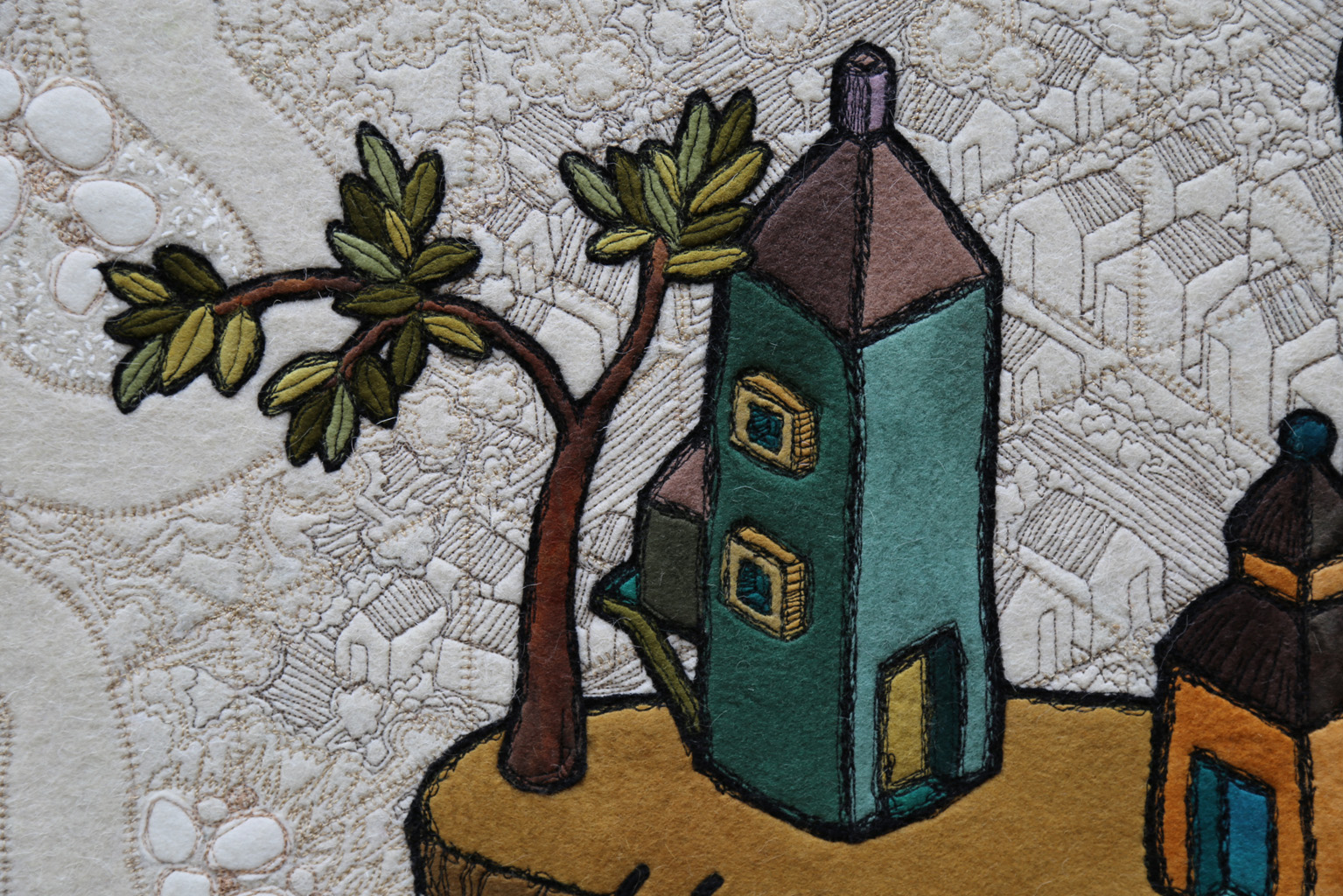
Expressions: The Wool Quilt Prize
Excellence in the art of contemporary wool quilt making
Established in 2000, Expressions: The Wool Quilt Prize is the National Wool Museum’s biennial acquisitive award. It encourages excellence in contemporary fibre arts, promotes the use of wool in contemporary art quilt making and the breadth of innovation and creative possibilities afforded by the use of wool in this art form.
Winning quilts becomes part of the National Wool Museum’s recognised and highly significant collection of over 200 quilts, waggas and blankets.
For the purposes of Expressions: The Wool Quilt Prize, a quilt is defined as:
A stitched, layered textile made predominantly of wool – at least 60%, including all layers and materials – incorporating any other materials and employing any technique.
Eligibility and Selection Criteria
To be considered for Expressions: The Wool Quilt Prize, quilts must be:
- Non-traditional – with the exception of contemporary interpretations of the traditional wagga concept
- Made predominantly of wool – at least 60%, including all layers and materials
- Nominated by the artist/maker/creator for consideration of the Award
- Available to become part of the National Wool Museum Quilt and Wagga Collection
When selecting a work for Expressions: The Wool Quilt Prize, judges consider:
- Effective use of wool
- Quality of the workmanship
- Aesthetic appeal
- Effective design
- Successful cohesion between artists intent (artist statement) and final outcome
- Ability of the work to complement and add value to the National Wool Museum Quilt and Wagga Collection
Wool: wʊl/: noun
The textile fibre obtained from the fine, soft curly or wavy hair forming the coats of sheep and other animals, including cashmere and mohair from goats, qiviut from muskoxen, angora from rabbits, and camelids such dromedary camels, llama and alpaca.
Structurally wool has qualities that distinguish it from other animal fibre such as hair and fur. Wool is crimped (has waves, folds or ridges), is elastic (can be stretched or twisted and returns back into place when released) and has microscopic barbs or scales on the surface of the fibre which allows it to hook together.
Chemically wool mainly consists of proteins (large molecule, long chain amino acids – the especial structural components of body tissues) together with a few percent lipids (fatty acids that are insoluble in water). In this regard it is chemically distinct from other textile fibre such as cotton and linen which are mainly cellulose.
Winning Works
Deluge Design No. 5, Alison Withers, 2023
Ghost Blanket IV, Fiona Gaven, 2021
By Wagga Design, Barbara Mellor, 2019
Klimt Print #2, Suzanne Reid, 2017
The Art of Record Keeping, Lisa Davis, 2015
Out There, Carolyn Sullivan, 2012
Les Rochers de mon Desir, Kim Gordon, 2010
Dressed in Memories IV, Michele Eastwood, 2006
Bow Wow Bower Bird, Pamela Fitzsimons, 2004
No Sugar, Katherine Morris, 2002
Earth Blanket, Pamela Farmer, 2000
For more information visit the OzQuilt Network